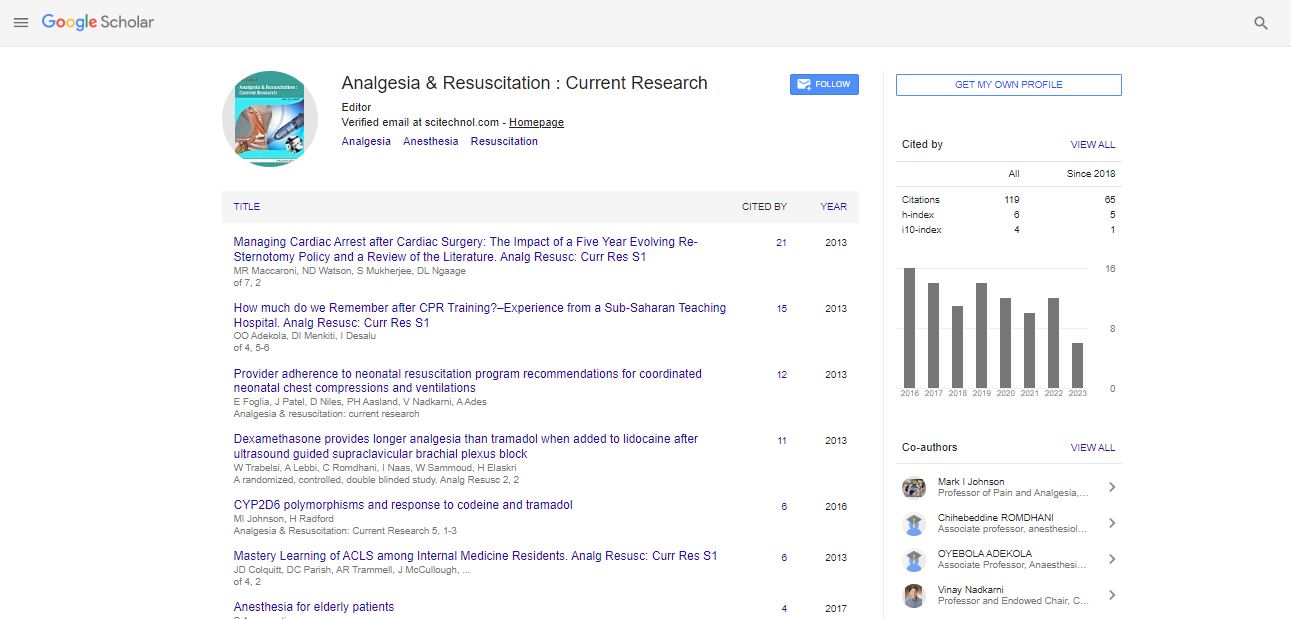Research Article, Analg Resusc Curr Res Vol: 5 Issue: 2
Comparing Three Eras of Hepatic Coagulopathy Normalization Using Coagulation Factor Concentrates
| Melissa R Ferguson1, Cassie A Barton1*, Jesse Bierman1, Nathan D Mah1, Ran Ran2, David Martin3, Daniel Hagg4 and Thomas Deloughery5 |
| 1Department of Pharmacy, Oregon Health and Science University, USA |
| 2Department of Emergency Medicine, Oregon Health and Science University, USA |
| 3Department of Surgery, Oregon Health and Science University, USA |
| 4Department of Pulmonology and Critical Care Medicine, Oregon Health and Science University, USA |
| 5Departments of Medicine, Pathology, and Pediatrics, Oregon Health and Science University, USA |
| Corresponding author : Cassie A. Barton Department of Pharmacy, Oregon Health and Science University, 3181 SW Sam Jackson Park Rd, CR 9-4, Portland, OR-97239, USA Tel: +15034944660 Fax: +15034940011 E-mail: bartonc@ohsu.edu |
| Received: May 18, 2016 Accepted: July 13, 2016 Published: July 21, 2016 |
| Citation: Ferguson MR, Barton CA, Bierman J, Mah ND, Ran R, et al. (2016) Comparing Three Eras of Hepatic Coagulopathy Normalization Using Coagulation Factor Concentrates. Analg Resusc: Curr Res 5:2. doi:10.4172/2324-903X.1000141 |
Abstract
Objective: To evaluate the efficacy and safety of three different normalization strategies utilizing coagulation factor concentrates (CFCs) in patients with hepatic coagulopathy of either acute or chronic etiology experiencing a life-threatening bleed or need for normalization of coagulopathy prior to invasive procedure.
Design: Retrospective analysis.
Setting: University-affiliated academic medical center.
Patients: Adult patients admitted with hepatic dysfunction who received CFC for treatment of an active bleed or to normalize coagulopathy prior to an invasive procedure.
Interventions: None.
Measurements and main results: Patients were stratified into three treatment groups dependent upon which CFC was administered: recombinant factor VIIa (rfVIIa), three factor prothrombin complex concentrate (3F-PCC)/rfVIIa, or four factor prothrombin complex concentrate (4F-PCC). Fifty patients were included who received rfVIIa (n=19, 38%), 3F-PCC/rfVIIa (n=9, 18%), or 4F-PCC (n=22, 44%) during the study period. The groups were well-matched regarding age, weight, sex, hospital and ICU length of stay, baseline coagulation labs, and characteristics of liver dysfunction. All patients in the rfVIIa and 3F-PCC/rfVIIa groups achieved an INR <1.6 within four hours of first CFC use. Eight patients (36.4%) in the 4F-PCC group met the same endpoint within four hours of administration. Transfusion requirements did not differ before and after CFC administration in all groups. TE complications occurred in eight (16%) patients.
Conclusions: CFCs appear to be effective for the normalization of INR in patients with hepatic coagulopathy in the setting of active bleeding or prior to invasive procedures.

